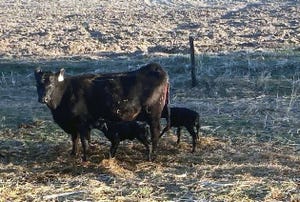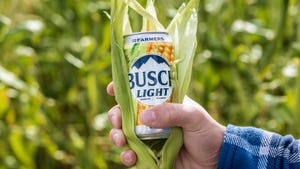Beef Cow Liquidation Continues Strong
“Despite handsome feeder-price levels, cow-calf producers continue to deeply cull their herds…evident by high percentages of slaughter cows and bulls at auction markets across the country, but also through actual slaughter data,” explained analysts
November 22, 2010

“Despite handsome feeder-price levels, cow-calf producers continue to deeply cull their herds…evident by high percentages of slaughter cows and bulls at auction markets across the country, but also through actual slaughter data,” explained analysts with the Agricultural Marketing Service (AMS) Friday. “Year to date, beef-cow slaughter is currently running 16.6% larger than the five-year average, which includes the huge selloff year of 2008 when the Southern Plains suffered extreme drought.”
According to Derrell Peel, Oklahoma State University Extension livestock marketing specialist, the U.S. beef cowherd decreased 12 of the last 14 years, dropping from a cyclical peak of 35.3 million head in 1996 to the January 2010 level of 31.3 million head. That’s the smallest beef cowherd since 1963.
Combined with smaller dairy-cow numbers, Peel explains the 2010 calf crop is expected to be 35.4 million head, the smallest U.S. calf crop since 1950. Total U.S. cattle inventory decreased by almost 10 million head since 1996 to the January 2010 level of 93.7 million head, the smallest cattle inventory since 1959.
That could be one reason the AMS reporter at St. Joseph Stockyards in Missouri last week noted, “Buyers continue to shrug off higher feed costs and already seem to be acquiring stocker calves for next spring's grass (see “Tight Supplies Help Calf-Feeder Prices”).
“Total cattle slaughter for 2010 is running almost 2% above 2009 levels,” Peel says. “Steer slaughter is up less than 1% this year. By contrast, heifer slaughter is up nearly 3% and cow slaughter is up 4%. It is clear that we are maintaining slaughter rates, in the short run, with our females.”
According to last Friday’s Cattle on Feed report, as of Nov. 1, on-feed numbers are 3% higher than a year ago. Placements in October were up 1%. Marketings in October were 1% less than the previous year. All were in line with pre-report estimates.
Peel explains expensive corn forces the industry to feed heavy yearlings and move them through the feedlot faster. Carcass weights in 2010 have been below year-ago levels almost all year, and high feed costs likely limits carcass weights to little or no trend in coming years. A faster feedlot-turnover rate exposes the shortage of cattle quickly as feedlots scramble to find sufficient supplies of feeder cattle to place on feed and maintain feedlot inventories.
“So far, we appear to have been able to do that,” Peel says. But, he cautions it isn’t sustainable without accelerating herd liquidation. At some point, the U.S. cattle industry will try to stabilize the herd size and then expand a bit.
“Given the current situation, this implies a significant reduction in cattle slaughter in the short-term just to hold the cowherd size steady. It seems likely this process will start in 2011,” Peel says.
See more at usda.mannlib.cornell.edu/
You May Also Like



